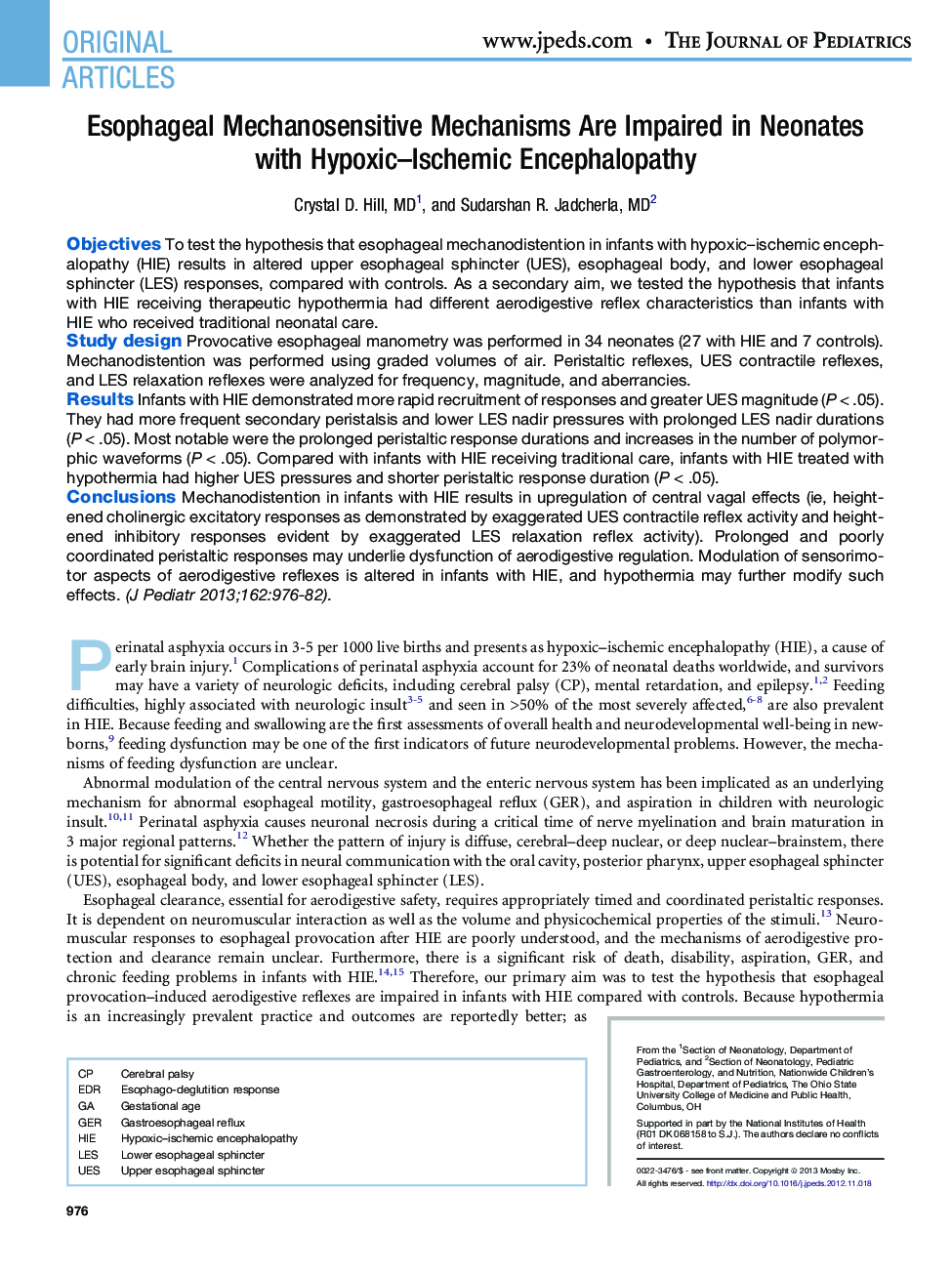| Article ID | Journal | Published Year | Pages | File Type |
|---|---|---|---|---|
| 6223685 | The Journal of Pediatrics | 2013 | 7 Pages |
ObjectivesTo test the hypothesis that esophageal mechanodistention in infants with hypoxic-ischemic encephalopathy (HIE) results in altered upper esophageal sphincter (UES), esophageal body, and lower esophageal sphincter (LES) responses, compared with controls. As a secondary aim, we tested the hypothesis that infants with HIE receiving therapeutic hypothermia had different aerodigestive reflex characteristics than infants with HIE who received traditional neonatal care.Study designProvocative esophageal manometry was performed in 34 neonates (27 with HIE and 7 controls). Mechanodistention was performed using graded volumes of air. Peristaltic reflexes, UES contractile reflexes, and LES relaxation reflexes were analyzed for frequency, magnitude, and aberrancies.ResultsInfants with HIE demonstrated more rapid recruitment of responses and greater UES magnitude (P < .05). They had more frequent secondary peristalsis and lower LES nadir pressures with prolonged LES nadir durations (PÂ < .05). Most notable were the prolonged peristaltic response durations and increases in the number of polymorphic waveforms (P < .05). Compared with infants with HIE receiving traditional care, infants with HIE treated with hypothermia had higher UES pressures and shorter peristaltic response duration (P < .05).ConclusionsMechanodistention in infants with HIE results in upregulation of central vagal effects (ie, heightened cholinergic excitatory responses as demonstrated by exaggerated UES contractile reflex activity and heightened inhibitory responses evident by exaggerated LES relaxation reflex activity). Prolonged and poorly coordinated peristaltic responses may underlie dysfunction of aerodigestive regulation. Modulation of sensorimotor aspects of aerodigestive reflexes is altered in infants with HIE, and hypothermia may further modify such effects.
